Text
3 notes
·
View notes
Text
3 notes
·
View notes
Text
Between 1994 and 2002, local communities applied for forest-use rights in the Maya Biosphere Reserve (MBR), with a dozen of them receiving 25-year concessions from Guatemala’s National Council of Protected Areas. “Given that this is a biosphere reserve where forest conservation is the principal objective, this is something pretty unique,” said Stoian. “It was an experiment, and it could have gone wrong.”
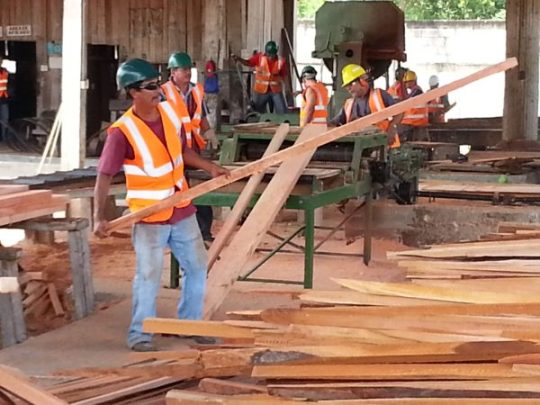
Guatemala’s central government originally wanted the region colonized by farmers, so it could be controlled and used for its resources. “The idea was not environmental,” she said. “But with the establishment of the Maya Biosphere Reserve in 1990, there was a switch in the government policy towards the region from agricultural to environmental.”
Communities set up Community Forest Enterprises (CFEs) in the reserve’s Multiple Use Zone, which gave them the right to use and manage forest resources on an area of about 400,000 hectares. Concession holders were obliged to get Forest Stewardship Council certification within three years, which allowed them to legally harvest and sell mahogany (Swietenia macrophylla), a precious wood that is considered an endangered species, and therefore highly valuable in the certified timber market. That independent third party certification played an important role, said Stoian, in reassuring the government that the communities were complying with the Council’s sustainability requirements.
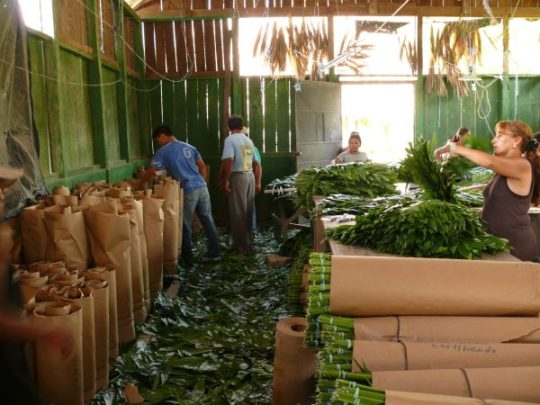
The CFEs are making significant investments in sawmills, machinery, and logging and wood-processing equipment. At the household level, their members are improving their homes, and increasing spending on health and education. “You see these positive feedback loops,” he said. “Virtually all of the younger generation now has access to secondary education and a higher number of them are studying in the capital.”
With households earning anywhere from USD500 to more than USD10,000 a year, he added, “that forest-based income ejects you out of poverty by any standard.”
#solarpunk#solarpunk business models#solar punk#community#forest based enterprise#community forest enterprise#guatemala
3 notes
·
View notes
Text
was at the local watering hole when the news broke and a random guy looking at his phone went "wow!" so i asked "trump?" and he said "no, new species of tiger beetle"
34K notes
·
View notes
Text
When we buy mushrooms from the shop, we get beautiful unblemished balls of similar size. Slightly damaged, too large or small mushrooms, as well as their stems, are kept away from consumer packaging as the food industry considers them waste.
An innovation by the Three Mushketeers startup puts these surplus mushrooms to use. The company has developed a mushroom powder that improves the taste of vegetarian dishes, effectively masking the flavours of legumes. The powder imbues food with a deep taste of umami.
The startup was founded by Emmi Korjus, Emma Kynkäniemi and Ida Nikkilä, who got to know one another in a research group at the University. The team has expertise in food technology, food chemistry and nutrition science.
At the moment, the second prototype of the mushroom powder is in the test stage.
“We have already agreed with a couple of industry partners on testing the powder in their products.
#solarpunk business models#solarpunk#startup#food waste#mushroom waste#vegetarian food#umami#solarpunk innovation
8 notes
·
View notes
Text
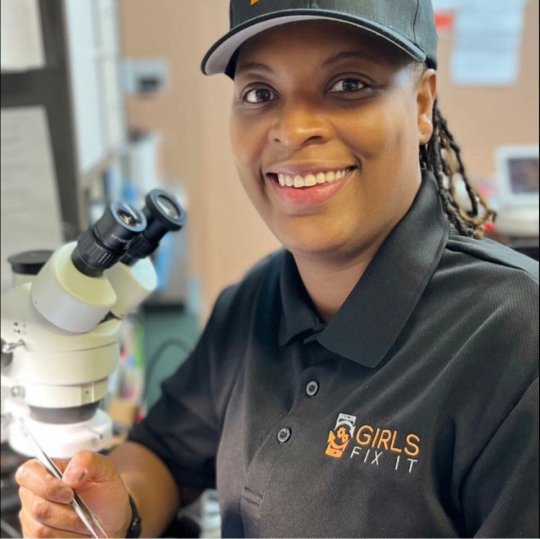
Surera Ward, CEO and founder of Girls Fix It, LLC
Girls Fix It, LLC, which she calls a technology solutions company specializing in cell phones, tablets, smartwatches, game consoles and computers.
Surera (pronounced “Shore-ah”) is part of the fastest-moving technology industry trend: consumer electronic repair and maintenance. Before starting Girls Fix It, she spent 20 years in the corporate sector, leading software development teams for Fortune 500 companies as an IT business analyst\project manager.
Ward taught herself to program in the 1990s when she worked in software development.
“Growing up,” she said, “I always liked to take things apart and fix them, like when a tape got stuck in the VCR machine. I got good at fixing.” At 19, Ward started a software development company in Delaware, Infinity Software Systems. After four years, she transitioned to teaching in schools in Wilmington and New Castle. Currently, Girls Fix It offers training to senior citizens, and Ward also does business consulting for Cellbotics, an electronic device repair training firm based in Atlanta.
But a major problem for Ward and others like her is the planned obsolescence that one also finds in the auto industry. After all, if a product works perfectly for many years, why buy a new one?
Ward is finding, for example, that once she and her two assistants have conducted a repair on a customer's phone, the device will “often throw up error messages hard-coded in by manufacturers to discourage users from going to third-party experts.”
And a practice known as “parts pairing,” which ties individual parts to the devices they're shipped with using unique serial numbers, has made it harder to repair them.
But consumers and small independent repair experts like Ward are fighting back. According to a recent WHYY report, a “Right to Repair” movement is gaining traction around the country. “Four states have passed laws that require manufacturers to make it easier for consumers to repair their devices – a cracked screen, broken phone camera or broken laptop,” according to the story. “There’s legislation in New Jersey, Delaware and a bill in the Pennsylvania Senate, and another in the House. Advocates of these laws say they will save consumers money, save the planet from tons of e-waste and will support small local businesses.”
Ward insists, “The 'Right to Repair' movement is for consumers and small businesses to have access to parts and schematics that they need. The manufacturers deliberately make the products hard to repair. Parts are often unavailable; schematics are often not accessible, and they create error messages. It's getting harder and harder to repair different devices. Any Apple iPhone 10 phone or better is very hard to repair. Legislation could help, but it would not fully resolve the issue.”
#solarpunk#solarpunk business#solarpunk business models#solar punk#reculture#girls fix it#women in tech#women founded business#repair#repair business#right to repair
4 notes
·
View notes
Text
Ritchie speaks to BBC Future Planet about what shifted her mindset, why the world might be reaching overall "peak pollution" – and ways that a more sustainable future could be secured.
What prompted you to change your mind about humanity's future? And why do you now think that "doomist" predictions do not inspire action?
Climate change has always been part of my life and I've always been quite worried, even as a kid. That got worse when I went to university, because I was studying environmental science and all the trends were very much going in the wrong direction. At the time I felt very anxious, hopeless, and like these problems were completely unsolvable.
The feeling of 'it's too late' just leads to inaction and paralysis – Hannah Ritchie
A key turning point for me was discovering the work of the Swedish physician and statistician Hans Rosling. When I was studying, I'd assumed that all of the human wellbeing metrics – such as global poverty, mortality and hunger – were also getting worse alongside the environmental ones. But Rosling would do TED talks where he'd show, using data, how the world had changed over the last few centuries for the better.
So, I started asking: can we do both things at the same time? Can we continue to improve human wellbeing while also reducing our environmental impact? And, over the last 10 years or so, according to the environmental data, there have been signs for cautious optimism. It's not inevitable that we get there, but I think there's the opportunity for us to do so.
25 notes
·
View notes
Text

Fermenstation manufactures highly pure ethanol from organic rice grown on formerly unused rice paddies in Oshu, Iwate Prefecture, that is used to make final products such as materials for cosmetics and other items.
The residue will be used as functional cosmetic ingredients, as well as animal feed for hens and cattle, while the manure can be used as fertilizers. Working with local communities, the company seeks to create a zero-waste circular society.
“What we’re trying to do is to put resources that remain unused in society to effective use by using them to produce ethanol and sediment left from fermentation,” Fermenstation CEO Lina Sakai said. “We want to develop an ultimate recycling model through this process.”
#solarpunk business#solarpunk business models#solarpunk#solar punk#startup#japan#women in tech#women founded startup
6 notes
·
View notes
Text
In a time marked by crises, learning to be one with the world is increasingly essential. In many ways, our everyday lives are linked with all other life on Earth. People are constantly connected to their surrounding reality through, for example, the food they eat and the air they breathe.
The current political strategy for a sustainable future emphasises economic and technological progress, but that is not enough. Learning is needed, too. A learning society relies on changes in its citizens’ values, beliefs and worldviews.
“How we become aware of our everyday connection to other people and nature at the level of our emotions, body and mind stands at the core of the sustainability transition,”
Having an experience of belonging to and being part of the world strengthens people’s sense of meaningfulness and their agency needed in building a sustainable future.
A sustainable future is not about life becoming more miserable – it’s about life becoming richer and more meaningful as hope for the future grows stronger.
Science says so
Arto O. Salonen, Erkka Laininen, Juha Hämäläinen, Stephen Sterling. A Theory of Planetary Social Pedagogy. Educational Theory 73 no 4 (2023). https://doi.org/10.1111/edth.12588
#solarpunk#solar punk#solarpunk futures#radical hope#meaning#values#community#life#don't give up hope#finland
27 notes
·
View notes
Text
Bpacks is a circular economy startup that has developed the world's first bark packaging technology, which integrates easily into existing production streams. Bark-based materials are fully compatible with current equipment for plastic packaging production, facilitating the shift to eco-packaging.
The startup is crafting packaging that is 100 per cent bio-based, with up to 75 per cent of materials sourced from production waste.
bark-based material turns into compost within a week in an active environment and enriches the compost with valuable nutrients.
Further, by utilising bark, a sidestream of wood production, as its primary raw material, Bpacks ensures that forest resources are not further strained.
With estimated bark production levels between 300 and 400 million m3 annually, the startup leverages this abundant resource to create environmentally friendly packaging solutions.
Furthermore, studies have highlighted the antimicrobial potential of bark extracts from various tree species. These extracts enhance the functionality of Bpacks' technology, which emits up to six times fewer CO2 emissions than traditional plastic production methods.
As a sidestream, forest waste is also being used by startups to make natural biochemicals, pulp-based cellulose, edible fats and oils. Its status as a living ingredient means it also has the potential to extend the life of the products which it packages according to Nešić.
#solarpunk#solarpunk business#solarpunk business models#solar punk#startup#reculture#bark into packaging material#serbia
11 notes
·
View notes
Text
Amid the mounting waste crisis, startup Mycocycle has pioneered a patent-pending process that unlocks the incredible metabolic potential of fungi to recycle industrial byproducts into low-carbon raw materials. By cultivating specialized strains of mushroom mycelium, the startup’s system can efficiently metabolize construction and demolition debris into a variety of eco-friendly building components.
Joanne Rodriguez, founder and CEO of Mycocycle, was featured in Forbes’ Next 1000 (2021), a list of up-and-coming ambitious entrepreneurs “redefining the American dream.” The startup is based in Illinois and has recently raised $2.2M in Seed Funding, bringing the total amount of funds raised thus far to $3.7M.
“We can learn from nature to solve some of the world’s biggest problems,”
#solarpunk#solarpunk business#solarpunk business models#solar punk#startup#reculture#mushrooms into eco-friendly building products#united states#women founded startup
7 notes
·
View notes
Text
"We actually invented an entirely new clothing care process from scratch with compostable organic cleaning liquid that we synthesize in our own office with our own engineers, as well as new ways to stretch and press clothes," said Presso CEO Nishant Jain.
First, the user positions a piece of clothing in the Presso machine and then enters information about its fabric and size. The process, however, takes only a few minutes and can cost up to 80% less than traditional dry cleaning, depending on the garment.
Along the way, it consumes seven times less water and three times less electricity than traditional laundry and dry-cleaning services, according to the company. It also eliminates transportation to a cleaning facility. And all that reduces the carbon footprint of the clothing care by 93%, it added.
"There are no hangers that are disposable, there's no disposable plastic bags. None of the process of even doing logistics inside a dry cleaning facility, none of that exists anymore," said Jain.
14 notes
·
View notes
Text
0 notes
Text
MyGug provides a technology that focuses on small food businesses that grow their own food, providing them with a food waste disposal system that turns waste into biogas energy for cooking that can be used in kitchens and gardens.
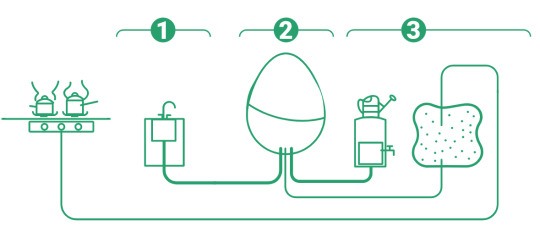
The egg-shaped MyGug units harness the power of a natural process called anaerobic digestion in which food waste is broken down to produce a natural gas suitable for cooking and liquid fertiliser for growing.

Headquartered in Clonakilty, Co Cork, MyGug was founded in 2021 by Fiona Kelleher and Kieran Coffey. The company works with the ambition to change the face of food waste.
#solarpunk#solarpunk business#solarpunk business models#solar punk#startup#reculture#farmers#renewable energy#biogas#food waste#ireland#solarpunk AF
9 notes
·
View notes
Text
Swish is building a cost-effective product to clean solar panels without the use of freshwater and expensive cleaning robots
4 notes
·
View notes
Text
Indigenous communities have sustained and coexisted with their ecosystems for centuries, holding wisdom about local forests and biodiversity. Integrating their traditional ecological knowledge (TEK) with technological approaches can enhance the effectiveness of restoration initiatives while ensuring holistic, culturally sensitive, and sustainable solutions.
Organizations like PRISMA in El Salvador and FOCEN in Mexico exemplify this synergy by integrating cutting-edge tools with community needs.
PRISMA's use of satellite data and local knowledge has enabled targeted reforestation efforts, leading to measurable increases in forest cover and biodiversity. Similarly, FOCEN's collaboration with Global Forest Watch has facilitated real-time monitoring of Monarch butterfly habitat, empowering local communities to detect and respond to threats more effectively.
These partnerships demonstrate the transformative potential of combining technology with community-driven conservation initiatives, paving the way for a more collaborative and sustainable future.
By recognizing the value of Traditional Ecological Knowledge and actively seeking collaboration with Indigenous communities, we can leverage the combined strengths of traditional wisdom and technological advancements to create more effective restoration strategies that benefit both the environment and the people who depend on it.
#solarpunk#solarpunk business#solarpunk business models#solar punk#reculture#indigenous knowledge#indigenous technical knowledge#traditional ecological knowledge#TEK#tech#technology#solarpunk AF#indigenous solarpunk
5 notes
·
View notes
Text
Arctic ice is shrinking by almost 13% a decade, according to WWF, prompting warnings from climate scientists that ice-free summers in the Arctic are inevitable by 2050. This, coupled with the very visible evidence of polar bears’ habitat melting, and the threat to the Indigenous people who rely on the Arctic ecosystems for survival, gave Ypma a wild thought.
“The Arctic acts as a sort of mirror or heat shield for the Earth and a substantial part of global warming comes from the Earth’s surface becoming darker,” he says.
“And so I thought: isn’t there some way to maintain that ice sheet for a bit longer until CO2 levels come down and the ice becomes regenerative? I had this naïve idea: why not pump water on top of it?”

Real Ice’s experiment in flooding part of Iqaluktuuttiaq in the Canadian Arctic. Photograph: Arctic Reflections
“I took the fact that it had been researched already as a positive sign, because then you’re not the only crazy person!” he says.
For Arctic Reflections, however, the key aim is to boost the “albedo” – the whiteness of the ice – and its ability to reflect the sun’s rays back to the atmosphere. The Dutch startup’s other idea is to explore whether Arctic currents could spread ice thickened at strategic locations. So instead of needing as many pumps, they could potentially save 100,000 sq km of ice from melting in the summer with just 100 to 1,000 installations.
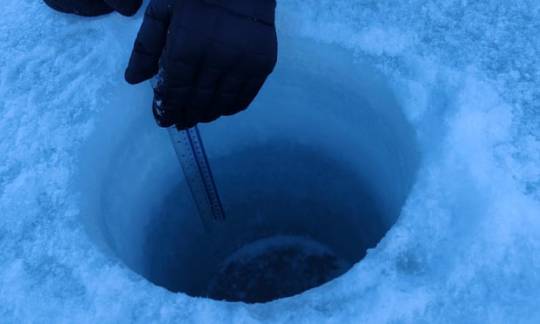
One of the Arctic Reflections team measures a layer of new ice laid on top of older, darker ice in Iqaluktuuttiaq
But there are still unanswered questions, such as how ice thinner than three metres will react to flooding and whether thicker ice will last, says Hayo Hendrikse, assistant professor at Delft University of Technology, who has worked on lab and real-life trials with Arctic Reflections.
“We know we can just pump water on top of ice, flood it and then it will freeze,” he says. “But can we also do it with a positive gain in the end?
“I see a potential for this on a smaller scale, for example, if you want to strengthen natural habitats for polar bears and seals, where the sea ice in summer could survive a bit longer if we target specific fjords or bays.
But Hendrikse adds: “It’s not a solution – it’s a sticking plaster.”
Julienne Stroeve, professor of polar observation and modelling at University College London, says it would probably be impossible to act on a large-enough scale to have a real impact on the climate.
6 notes
·
View notes